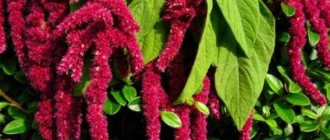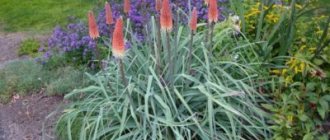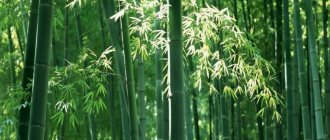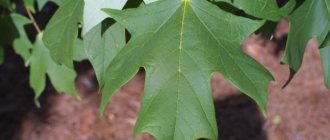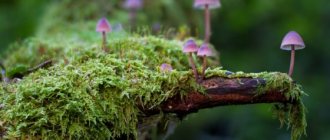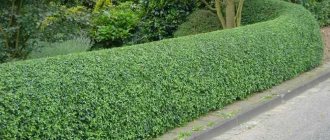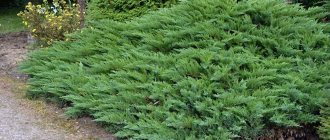This evergreen coniferous plant is called differently. In addition to the common name - yew berry - you can also find such as zelenitsa, negniyushka, negnoy, mahogany. What's so special about it?
The distribution area of yew is quite wide, it comes from central and southern Europe. In the territory of the former USSR, this plant can be found in the Crimea, the Carpathians, the Southern Kuril Islands and the Caucasus Nature Reserve. Individual specimens grow in the Kaliningrad region, Belovezhskaya Pushcha, and the western part of the Baltic states.
But due to their durable wood, which has bactericidal properties, these trees were cut down in large numbers by humans over the years, so today they are considered rare. In addition, yews grow very slowly, but they can live up to 4 thousand years.
The annual growth of yew is up to 10-15 cm in height and about 1.2 mm in trunk diameter
Botanical description
The berry yew species, also known as the common yew (lat. Taxus baccata) belongs to the genus yew (lat. Taxus). Family – Yew (lat. Taxaceae). In total, the genus Yew includes 7 different species, including trees and shrubs. Over 150 cultivated varieties of yew berries are known, differing in size, crown shape, and shades of needles. In gardens, hybrids are often planted that reproduce vegetatively - by cuttings, producing a shrub crown. Life expectancy is from 1.5 to 4 thousand years.
The average height of the tree is up to 20 m, but there are specimens up to 27 m tall. The crown is narrow, ovoid-cylindrical up to 1.5 m in diameter. The branches form a dense cover. Often the crown is formed from several crowns. The bark of young yew trees is smooth, and then becomes lamellar, colored red-gray. The buds are round in shape with several light brown scales. The trunk has a mass of buds that are in a dormant state, and each of them is capable of sprouting.
The needles of the yew berry are narrow, shiny dark green bare leaves up to 3.5 cm long and up to 2.5 mm wide, lighter on the underside. Anther cones are formed from the leaf axils. The seeds ripen in single cones. Each contains only one ovule, around which a fleshy ring aryllus grows. It has a sweetish taste and, when ripe, acquires a bright crimson color. Ripe oval, pointed seeds are covered with a hard brown shell. Flowering occurs every year in April-May, and seed ripening occurs in October. Even the fleshy, theoretically edible arylluses, which look like ripe berries, are not eaten, as there is a high risk of poisoning (they themselves are not poisonous, but the seeds are very toxic).
Most common types
As mentioned above, different varieties of yew can be very different from each other. Therefore, it will be quite useful to talk about several of the most common types.
For example, the berry yew, which grows in Europe and is therefore often called the European yew, is a tall coniferous plant. It also grows in the European part of Russia - for example, in the Kaliningrad region. Quite often the yew berry is found in Belovezhskaya Pushcha. But if you meet it in the Caucasus, it will not be easy to identify it - here it resembles a tall shrub rather than a tree.
For example, the Elegantissima variety has a unique feature - it is not an evergreen. Closer to winter, its needles turn white, which gives it a special sophistication and sophistication. But he may not be able to withstand Russian frosts
Therefore, in winter it is very important to insulate it well, otherwise the plant may not survive until spring. Now you know where yew berry grows and what it looks like
This means you can move on to lesser-known varieties.
Pointed yew is also very different - there are both very tall varieties and ordinary semi-dwarf shrubs. Only an experienced gardener will be able to determine at first glance that two completely different trees are representatives of the same species. One of the main advantages of this species is frost resistance.
Popular varieties
In Russian gardens it is difficult to find even decorative forms of yew berries. It remains exotic because the plant's toxicity scares away gardeners. Meanwhile, nurseries offer a fairly wide selection; the following varieties of conifers have become the most popular.
Yew berry Repandens (lat. Taxus baccata Repandens)
A dwarf form that takes on the appearance of a bush with shoots spreading low along the ground. The skeletal branches are long, extending from the center and growing almost parallel to the soil. As a result, the yew takes on a cushion-like shape. The annual growth is no more than 8 cm upward. An adult plant reaches a height of 60-80 cm with a crown width of up to 3-4 m. The needles, located spirally or radially on the shoot, are dark green; the sickle-shaped needles are directed almost vertically upward. Yew tolerates formative pruning well, is shade-tolerant, prefers moist soil, and is winter hardy down to -23 °C.
Yew berry Elegantissima (lat. Taxus baccata Elegantissima)
A very popular variety, characterized by the highest shade tolerance among all types of yew. A spreading shrub with abundant fruiting, suitable for forming a very dense hedge. An adult plant is about 2.5 m tall, crown width is up to 3.5 m. Annual height growth is no more than 10 cm. It can be cut in half to obtain an attractive shape. The needles are light lemon in color, lightening to almost white in the fall. Winter hardiness – up to -25 °C.
Yew berry David (lat. Taxus baccata David)
Shrub up to 2 m high with a narrow conical crown. The maximum height is 2 m, and the width of the crown is 60-80 cm. The needles in the depths of the crown are dark emerald, but young needles have a pronounced golden border, which turns green with age. The annual growth is modest - up to 7-10 cm. Winter hardiness - up to -23 ° C.
Use in landscape design
Yew is in great demand in landscape compositions in the garden and on personal plots. It is easy to form a beautiful crown with the help of a haircut; yews tolerate pruning calmly. After special pruning, plant figures acquire clear outlines. Yew trees can be used to make geometric shapes, pyramids, silhouettes of people and animals. Bushes are planted along fences to form a hedge.
Red trees are combined with other conifers: thuja, juniper, rhododendron and Japanese quince. Often the perennial is planted in rock gardens or topiary. In autumn, berries turn red among the green needles and this gives the landscape composition a special beauty and attractiveness.
Planting and care
Berry yew is shade-tolerant. It is planted so that direct light falls on the crown for only part of the daylight hours. In slight shading, the crown forms brighter, fruiting is more abundant, and resistance to low temperatures is higher.
The requirements for the soil relate to a greater extent to its looseness. Before planting, it is enriched with humus. Clay and calcareous soils are suitable, the main thing is not acidic. Successful sites are located near water bodies, but not in wetlands or flooded areas.
The optimal planting time is from late August to October. In the south it is best to plant in autumn in October, and in the north only in early September and in a more sunny place. This applies to seedlings with an open root system. Specimens in containers can be replanted throughout the season.
Planting holes are dug only slightly larger than the volume of the underground part of the yew tree - up to 70 cm deep. For growing hedges, trenches of the same depth are dug. The optimal distance between seedlings is 1.5-2 m, and for a hedge - only 50 cm. A thin (up to 20 cm thick) drainage layer of sand and gravel is poured onto the bottom of the hole. Immediately after planting, the yew is watered abundantly, and the soil around is mulched. You can loosen the soil to a depth of no more than 10 cm, so to prevent crust formation, it is best to use mulching.
Yew berry is not a very demanding crop when it comes to feeding, as it grows quite slowly. “Kemira-universal” is optimally suited - a fertilizer that is applied at the rate of 100 g per 1 m2 only 1-2 times per season. You can use Nitroammophoska, which will require less - 50-70 g per 1 m2.
Trees older than 3 years need not be watered, but younger specimens will require regular watering during dry times. 10-15 liters of water are poured under each plant at a time. Sprinkling is useful, but do it only at dawn or after sunset.
Pruning is required only once a year, in April. Usually up to 1/3 of the length of the shoots is removed, but in some varieties you can cut up to 1/2. In this case, the purpose of pruning is to remove damaged areas of the crown, or to give it an aesthetic shape; there is no other task.
Yew berry - where it grows
These photos show the yew plant, which grows in Southern, Western and Central Europe. Bushes can be found in the forests of Africa and Iran, in the Crimean mountains, the Carpathians, in the Caucasus Nature Reserve, Belarus, Lithuania, Estonia, Latvia, and the Baltic states. In Russia you can find the plant in the Kaliningrad region. One of the oldest European trees is the Fortingall yew, which lives in Scotland. If you believe the legends, Pontius Pilate himself rested under the crown of a beautiful tree when he was a child.
Reproduction
Propagation by seeds is the most labor-intensive, and does not allow preserving the characteristics of yew berry hybrids. The easiest way to propagate yew berries is by cuttings that retain all the characteristics of a particular variety 100%.
For cuttings at home, in October or April-May, a branch 3-5 years old and 15-20 cm long is cut off. The bark is removed from the lower part and dipped in a root formation stimulator. Plant immediately in a mixture of peat and sand (2:1). Autumn cuttings are kept in a greenhouse in winter, and in April they are planted in open ground. Spring cuttings are germinated in a greenhouse and replanted in summer. The period for root formation is 3-4 months. All young seedlings are covered for three years with the arrival of frost.
Yew berry seeds can be stored for 4 years. They require stratification in autumn and winter for six months at a temperature of +3-5 °C. Sowing is carried out in March. Stratified seeds germinate unevenly within 8 weeks, and unstratified ones after 1-3 years. Seedlings are picked in the 3rd year from emergence, and transplanted into parks in the 4th year of life. Transplantation to a permanent location can be carried out after another 3-4 years.
Cypress
An evergreen conifer, durable, frost-resistant, able to withstand any air pollution and strong winds. It takes root in “difficult” soil, but with good drainage. Cypress trees are equally resistant to dryness and strong humidity, but regular watering and partial shade are extremely important for them. Yellowish cypress species prefer sunny places.
Under natural conditions, the tree can reach 50-70 meters in height, but its dwarf varieties, for example “Compacta”, are only 1 meter tall, and the “Nana” variety grows up to 60 centimeters. Even in the photo you can see that the cypress tree resembles a thuja. Its “taller” types are appropriate near a hedge, and dwarf ones, with lush, cascading branches or intertwining creeping branches, are more suitable for “strict” rockeries or on a multi-colored rock garden. Tolerant of haircuts.
Diseases and pests
The culture suffers from invasions of gall midges, yew moths, spruce needle beetles, and pine cutworms. All of them leave characteristic traces: yellowed needles, gnaws on the needles, dried tips of the shoots. For prevention in spring and summer, spraying with broad-spectrum insecticides, for example, Karbofos, Rogor, Nitrafen, is carried out.
Common diseases - fomoz, fusarium, brown schutte, necrosis - affect the berry yew and can spread from it to neighboring plants. Most often, plantings in low-lying areas with heavy soils suffer. Fungicides containing copper are used for treatment.
Pharmacological properties
Yew berry has beneficial properties, despite the fact that it contains substances that are dangerous to the human body.
Pharmacological action is as follows:
- Suppresses inflammatory processes.
- Reduces pain.
- Prevents the development of tumor formations.
- Has an anesthetic effect.
Due to these properties, the plant is used in the manufacture of medicines and is also used in folk medicine.
It is especially popular in the treatment of pathologies of the urinary and reproductive systems, as well as headaches, benign or malignant neoplasms.
Yew berry is widely used in herbal medicine
Meaning and Application
Groves have been cut down for centuries to obtain wear-resistant, dense wood, not inferior to cedar in strength. It was valued in the production of furniture, household items, and ceiling beams. Wood has a bactericidal effect, so boards and beams made from it do not grow moldy. Today, raw materials are rare and very expensive.
Poisonous needles and berries are valuable medicinal raw materials. Extracts are obtained from them, which serve as the basis for various preparations. The use of yew berries in the treatment of dermatological, inflammatory, and oncological diseases is widely known. It is impossible to use such drugs without medical advice and supervision; in case of overdose, arrhythmia, weakness, vomiting, and difficulty breathing are observed. If the stomach is not rinsed in time and detoxification therapy is not carried out, then death is possible.
Use in landscape design
In gardens in the middle zone, low-growing shrub forms are often planted, as they have significantly higher winter hardiness. Tall trees can freeze over at temperatures below -20 °C.
Ephedra tolerates formative pruning well, which allows you to obtain not only hedges of the required density and height, but also all kinds of shapes (columns, balls, cubes, etc.). Without pruning, the crown also looks attractive.
Yew berries are often planted near ponds, along garden paths, and on alpine hills. Its thick emerald needles combine beautifully with garden sculptures. Trees and shrubs look most advantageous next to other conifers: junipers, thujas. In the south, yew can often be seen next to rhododendrons, and in mid-latitudes - with ferns.
Beautiful but poisonous
As beautiful as the garden yew is, it poses a danger that you need to be aware of. Due to its toxic properties, yew is rarely chosen for landscaping areas accessible to pets and children. The needles and seeds of the fruit contain a dangerous substance called taxin, which can cause respiratory and cardiac arrest, or, at best, indigestion and loss of consciousness.
The older the tree becomes, the stronger the poisonous effect. The only harmless part is the red pulp of the cone berries, which is why birds eat the fruits. Yew is safe for deer and hares; animals feed on its branches. It is not recommended to harvest the pulp yourself, as the seeds also contain poison.
Interestingly, taxine is used for medical purposes to produce antitumor agents.
Due to their unusual properties, only confident and experienced gardeners choose berry yews for planting on the site. With proper care, young seedlings grow into graceful columnar-shaped giants or compact creeping bushes.
